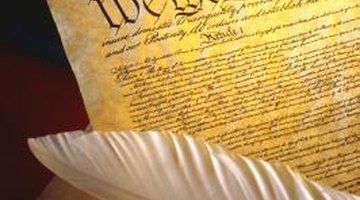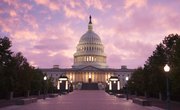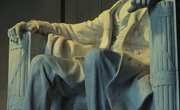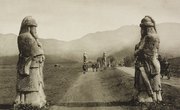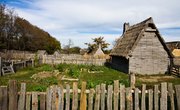The United States was birthed out of 13 self-governing British colonies, who ruled their turfs independent of each other. Although separate entities, a common thread of government shaped each colony. Depending on where an early settler came ashore, he might be ruled by a charter, proprietary government or royal rule. By the American Revolution, most colonies consisted of a three-part system involving a governor, council of advisers and an elected assembly representing each colony’s citizens.
Early History
Dissenters, as they were known in Britain, were the first American immigrants, landing at Plymouth Rock in 1620. As more and more Englishmen sailed for the New World, British royal charters were set up specifying the rights of the colonists. By the American Revolution, charter colonies, later dubbed corporations by historians, only remained in Rhode Island and Connecticut. Provincial forms of government, which included three proprietary and seven royal colonies, were more prevalent.
Governors
By the end of the 17th century, the majority of colonies had become royal provinces headed by an English appointee expected to carry out British mandates. Colonial governors enforced laws, appointed administrators and judges, served as commander-in-chief over their territory and held veto power. Although the governor answered to Britain, he also needed to be aware of local colonial interests, sometimes placing him in conflict between the two.
Advisory Council
Britain’s Privy Council and House of Lords served as blueprints for the governor’s advisory council, which was made up usually of 12 men, also appointed by Britain. The council was the upper house of the legislature, approving executive proceedings, and in some cases, colonies gave them the power administered by a supreme court. Often the council endorsed the governor’s efforts since they were both appointed by Britain. Massachusetts took a bold step in 1691, electing a General Court by legislative joint ballot.
Elected Assembly
Colonial representatives were elected by citizens, forming the lower legislative house of representatives. Assemblies were the avenue citizens used for political demands. Royal colonies needed Britain’s approval for passage of mandates, but other colonies were free to pass initiatives on their own. The assembly was the only part of the legislature that could pass taxes.
Small Government
Although there was a certain commonality in the general makeup of each colony’s structure, differences existed especially at the local level. The main seat of government could be a county, parish or town, depending on where a colonist lived. Colonial governments were small, featuring tiny budgets, low taxes and relatively few paid civil, judicial and police positions. Elected representatives were voted in by white males who owned property within the colony.
Related Articles
Writer Bio
Anne Reynolds is a writer who has worked for the U.S. government, the public school system and as a public library specialist. She began writing in 1990 and has contributed articles to various online publications.

